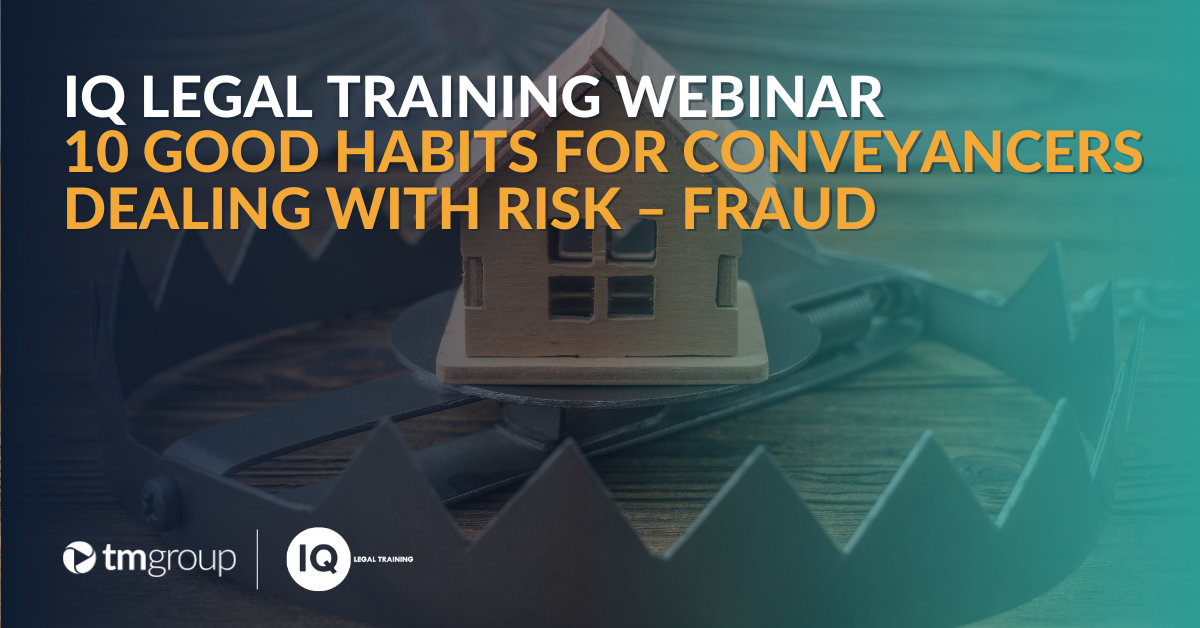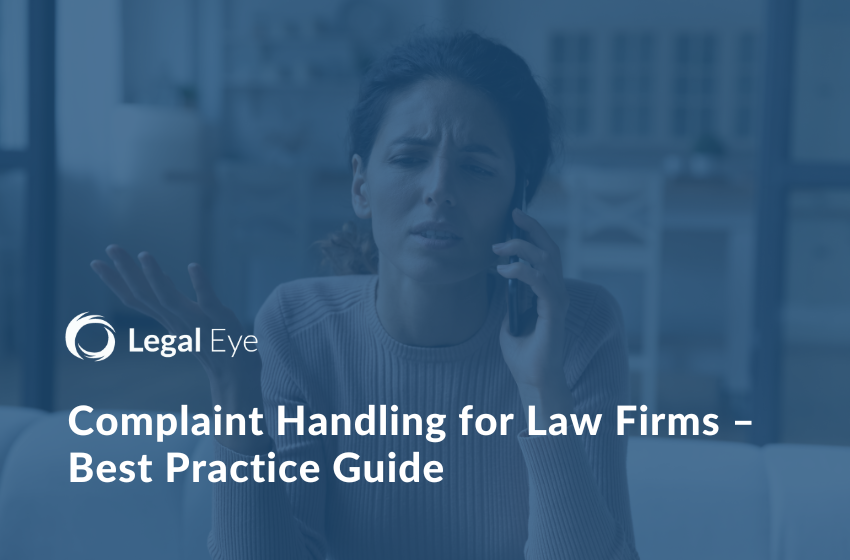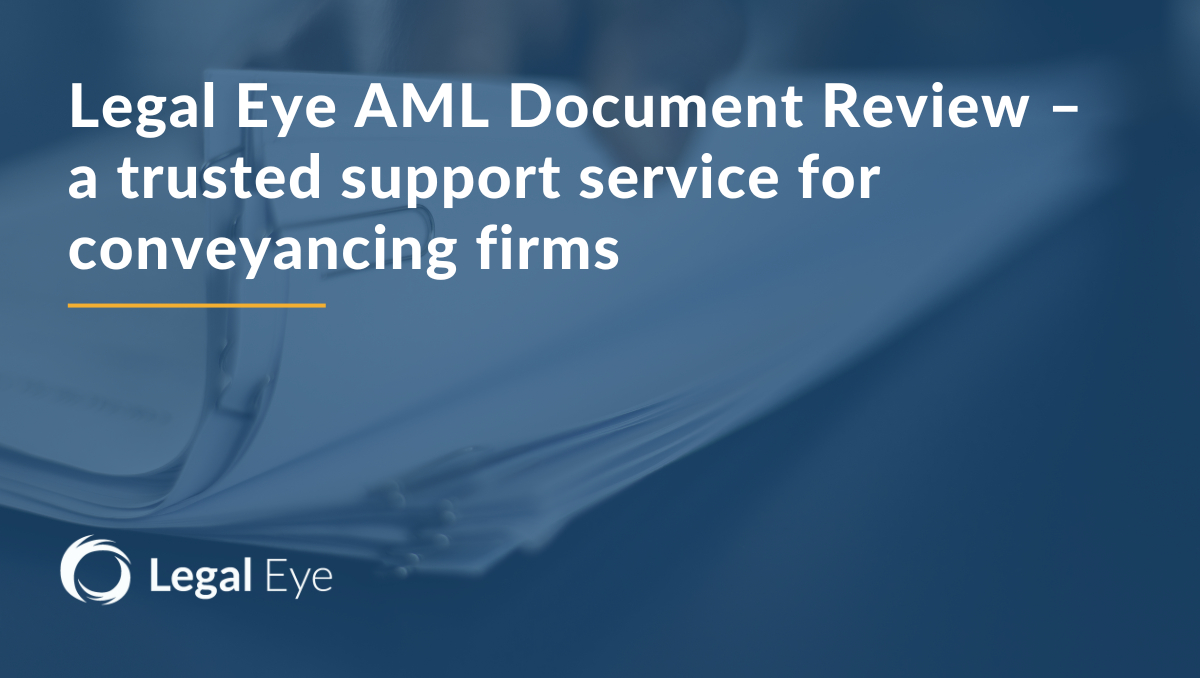Dealing with client complaints effectively is an integral part of delivering high quality client care…
Fraud poses a significant challenge for residential conveyancers, with criminals often attempting to exploit the transaction process for money laundering purposes.
The consequences extend beyond dissatisfied clients who fall victim to fraudulent activities. Conveyancers may also face negligence claims when third parties suffer losses due to fraud, placing an additional burden on resources.
In the new free webinar series to educate and inform conveyancers across many areas of residential risk management, leading property search and data experts, tmgroup, has teamed up with IQ Legal Training to reveal the top habits needed for effective fraud risk management. We take a look at some of the key takeaways.
Risk assess your client
Exercise caution by conducting a thorough risk assessment of the client, the transaction and involved third parties right from the beginning. Establishing a deep understanding of your client is crucial.
Inquire about the client’s motivations for instructing you and assess whether you genuinely need to engage with the client or undertake the specific work.
Create and comply with procedures and processes
Does your firm have established policies and procedures in place for managing out-of-area or international clients? Do you limit the number of clients engaging from a distance?
Conveyancers should evaluate risk associated with third parties involved in the transaction, such as mortgage brokers. Make sure that every party complies with those procedures and processes, and that they are regularly reviewed.
Scope the retainer
Conveyancers must have documented evidence that the client has received, processed and understood the information that has been communicated to them. In cases where the transaction appears significantly disadvantageous to the client, conveyancers are obliged to communicate this concern to the client, irrespective of what’s already been set out in the retainer.
Adopt Safe Harbour ID verification requirements
Electronic client verification serves a crucial role. However, whether you use digital or paper-based checks, conveyancers must stay vigilant to the ongoing risk of identity fraud throughout the transaction.
By adhering to HM Land Registry’s set procedures for verifying client identity, the conveyancer meets their “Safe Harbour” standard. In doing so, Land Registry will not pursue any recourse claims against the conveyancer due to the registration of a fraudulent transaction on the grounds of inadequate identity checks.
Devise an action plan to challenging and test information
Incorporating safeguards and extra checks is crucial to minimise the risk of fraud.
Any suspicions must be reported to the National Crime Agency, who will ascertain the presence of criminal activity or the extent of the suspicion.
Registration fraud due diligence
Title fraud arises where a criminal steals a property owner’s identity and changes the property title from the owner’s name to their own. A forged transfer or legal charge could register against a title, enabling the fraudster to apply for loans using the true owner’s equity as collateral.
According to the Land Registry, owners who may be more susceptible to registered title fraud include those who rent out their property, overseas owners or elderly owners who are in hospital or a care home. Properties without a mortgage are also at increased risk of title fraud, with attempts to sell or charge the targeted property through identity fraud.
Mortgage fraud checks and balances
Mortgage fraud occurs when criminals steal money from a financial institution or private lender through the mortgage process. Conveyancers should be vigilant to situations where the client’s information given is different to information on the electoral register or any other verification information, or if changes are made to the client’s details or the bank account designated for funds disbursement during the process.
Review and refine your undertakings
Undertakings play a fundamental role in the conveyancing process. Conveyancers should consider who is providing an undertaking, its wording, how reliable it is, and then take additional steps and measures to protect their client with regard to that undertaking.
Failure to comply with an undertaking can result in disciplinary action from the Solicitors Regulation Authority {SRA) and case law shows there are serious consequences for solicitors (and their professional liability insurers) where breaches are found.
Recognise seller and buyer fraud patterns
Fraudulent activity can be perpetrated by family members, friends or partners, third parties, or by individual opportunists or professional fraudsters, often operating as organised crime gangs.
Seller identity fraud is another concern, where the seller provides instructions on a residential property in which they don’t reside. Take extra care to authenticate the ‘seller’ as the legitimate owner of the property.
Do the simple things well
Negligence claims often arise as a consequence of a failure to do the simple things in a relatively straightforward transaction. Conversely, in complex transactions where alarm bells are ringing, a heightened sense of caution prevails and, with it, a more protective approach.
Jonathan Stebbings, Chief Commercial Officer at tmgroup, concludes, “Conveyancing can be a risky business. Conveyancers must stay vigilant to the risks, continuously assess potential fraud types and strengthen their own safeguards to stop fraudsters in their tracks.
“That’s why tmgroup offers the most comprehensive suite of risk management tools all in one place to help law firms effectively and efficiently manage their risk. From risk alerts, audit trails, tailored search recommendations and management dashboards, to industry-leading title management solutions, ID and AML compliance tools and verification checks, we deliver protection and peace of mind to both legal firms and their clients.”
Click here to watch the full webinar and access comprehensive accompanying learning notes. Alternatively, visit tmgroup’s website to discover more about tmgroup’s range of risk management solutions or watch more risk management webinar episodes.




